Art & Exhibitions
Lawrence Weiner Updates an 18th-Century Palace with 21st-Century Text
The conceptual artist goes big.
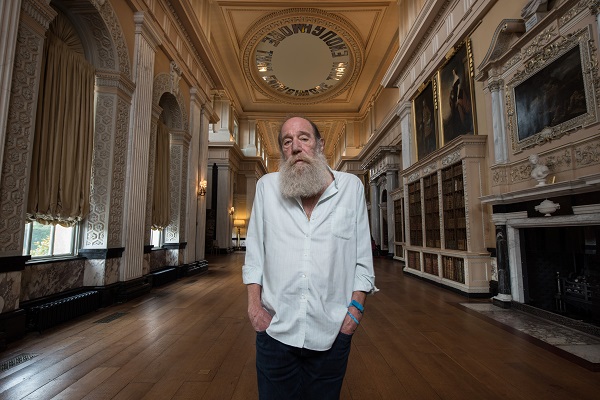
The conceptual artist goes big.

Lauren Palmer

Although many who travel to Blenheim Palace go for its connection to Winston Churchill, there’s another reason to book a trip to the former British prime minister’s ancestral home: The Blenheim Art Foundation, which brings contemporary art to the opulent UNESCO World Heritage site.
For his commission at Blenheim Palace, Lawrence Weiner has created one of his signature textural installations meant not to compete with the museum’s holdings or grounds, but to exist in “a simultaneous reality,” the artist told artnet News in a phone interview. “There is no hierarchy, there’s no my-stuff-is-more-interesting-than-this-stuff. If you begin to follow the logic of what I’m presenting in the space, you begin to get an entirely different thing. [The exhibition] begins to turn Blenheim Palace into a normal museum where there’s other people’s art. A normal public space. And I was rather shocked that it worked.”
Grouped with 1960s conceptual artists such as Joseph Kosuth, Robert Barry, and Sol Lewitt, Weiner’s art is adept at raising awareness and challenging the status quo through text-based artworks. For the past five decades, the “language-based sculptor,” to borrow art critic Roberta Smith’s term, has reliably given his audience something to ponder.
“Within A Realm of Distance,” which runs until December 20, spans the exterior and interior of the palace; new works are on display along with several of the artist’s favorites that “talk about things,” as the artist softly explains.
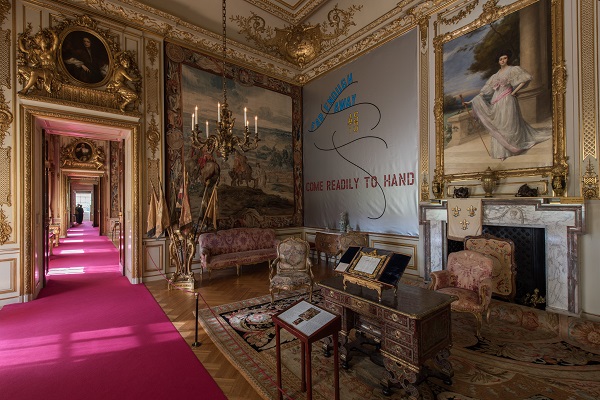
WITHIN A REALM OF DISTANCE LAWRENCE WEINER AT BLENHEIM PALACE (2015).
Image: Hugo Glendinning/Courtesy of Blenheim Art Foundation.
“I tried to build an entire show that had a logic structure to it, about the value of objects and the relationship of human beings to objects, and objects to objects in relation to human beings,” he continued.
These juxtapositions serve as the structure for the exhibition; just as Weiner’s artwork is situated among the Blenheim’s treasures, visitors situate themselves within both concurrently.
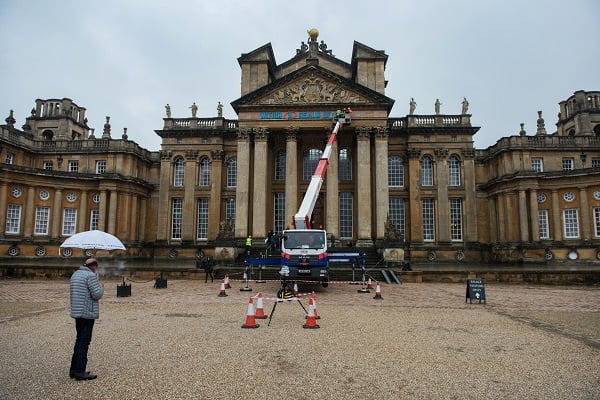
WITHIN A REALM OF DISTANCE LAWRENCE WEINER AT BLENHEIM PALACE (2015).
Image: Hugo Glendinning/Courtesy of Blenheim Art Foundation.
Visitors to the palace are encouraged to explore, as the exhibition uses space and surfaces that span the site in creative ways. Look up on the ceiling in the palace’s library, or investigate inside and out to find posited tokens, reminding viewers of our tendency toward accumulation and the “objects that we spend our life around,” as Weiner says. The coins are inscribed with “Dry Earth + Scattered Ashes” on one face, and “Dry Earth + Buried Gold” on the other, in the artist’s characteristic capitals.
“[The font is] called Margaret Seaworthy Gothic,” the artist shares with artnet News. “I wanted something that had some elegance, but no authority.”
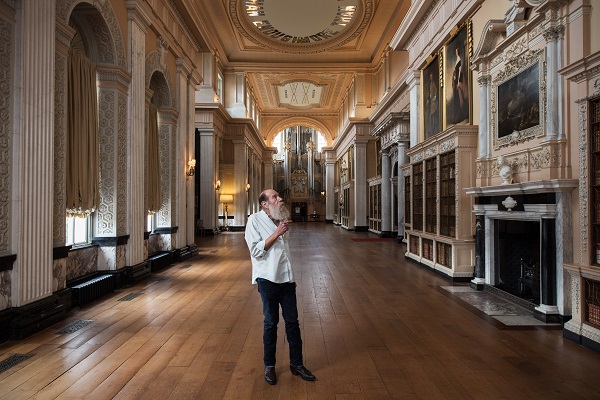
WITHIN A REALM OF DISTANCE LAWRENCE WEINER AT BLENHEIM PALACE (2015).
Image: Hugo Glendinning/Courtesy of Blenheim Art Foundation.
With careful pre-planning, the work was installed in just a week. “Even the façade was [installed] three days before it opened,” Weiner said. He attributes much of the success of the exhibition to the team behind it: “I was impressed. I didn’t think I could do it and they could do it, but we did.”
See more images of the works on view below.
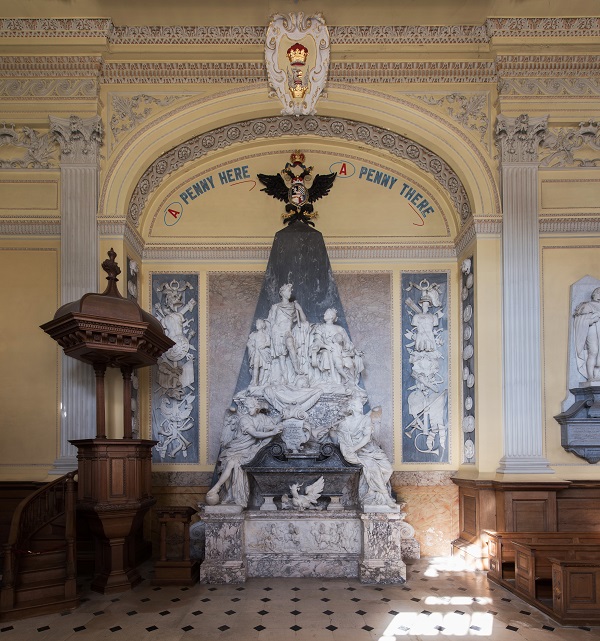
WITHIN A REALM OF DISTANCE LAWRENCE WEINER AT BLENHEIM PALACE (2015).
Image: Hugo Glendinning/Courtesy of Blenheim Art Foundation.
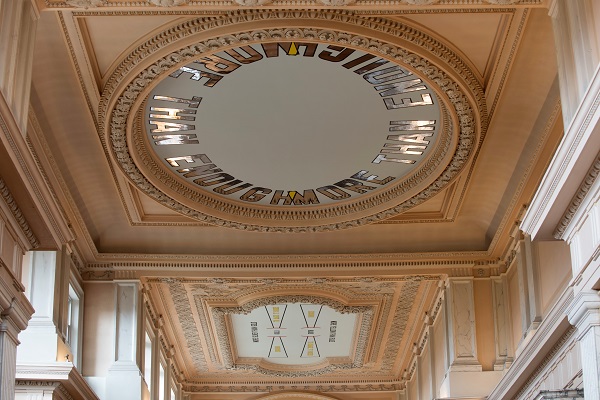
WITHIN A REALM OF DISTANCE LAWRENCE WEINER AT BLENHEIM PALACE (2015).
Image: Hugo Glendinning/Courtesy of Blenheim Art Foundation.

WITHIN A REALM OF DISTANCE LAWRENCE WEINER AT BLENHEIM PALACE (2015).
Image: Hugo Glendinning/Courtesy of Blenheim Art Foundation.
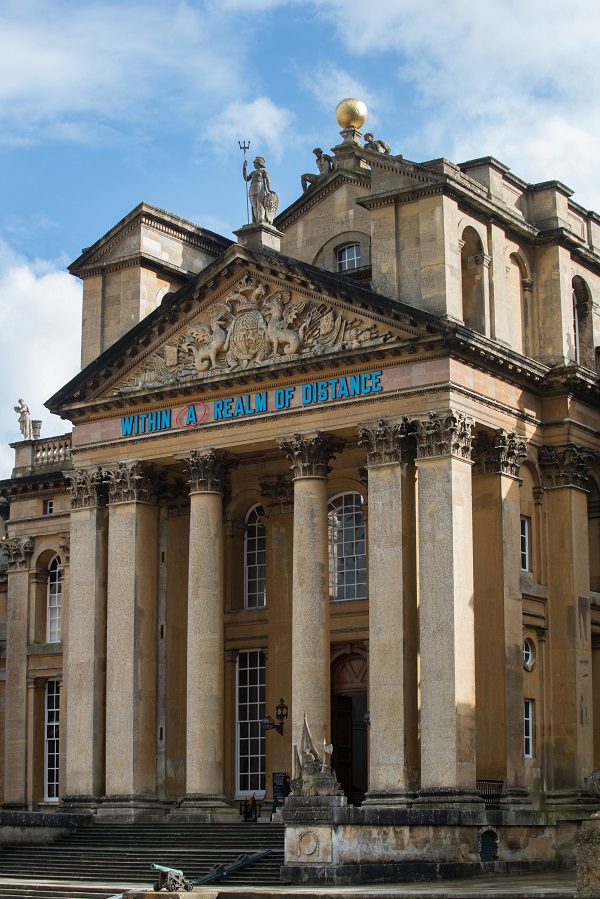
WITHIN A REALM OF DISTANCE LAWRENCE WEINER AT BLENHEIM PALACE (2015).
Image: Hugo Glendinning/Courtesy of Blenheim Art Foundation.